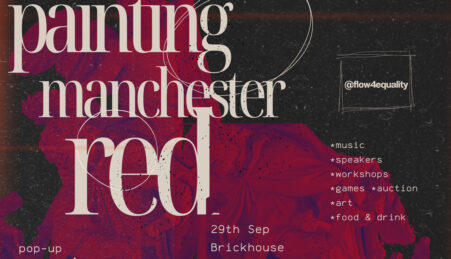By Pierangelly Del Rio Martinez
In wake of the socio-political tensions in the United States, conversations about race relationships and the position of the white American as a perpetrator or bystander of people of colour’s oppression have taken the spotlight of not only the American but also the international public.
Such tensions are nothing new as explored by Professor Helen Laville in her public lecture “The Gentle Weapon”: Social Ostracism as a Weapon of Massive Resistance in Montgomery Alabama. Laville, who has been a Pro-Vice Chancellor for Education at Manchester Met since 2016, served as Head of the School of English, Drama and American and Canadian Studies at the University of Birmingham. Her research focuses on post-war US history, international networks, civil rights and American Women’s political activism. The later was the centre of “The Gentle Weapon”, which started with Edmund Burk’s famous quote: “The only thing necessary for the triumph of evil is for good men to do nothing.”

Laville explained, “Regardless of how we attribute this quote, the sense of this is behind my lecture, the idea of what massive resistance was aiming to do, which was to stop good men, and, in the case of my lecture, good women, from doing something; to make sure they did nothing. And that was the aim of massive resistance.”
However, before focusing on the role of women and the effect of social ostracism, Laville introduced the historic context with the aim to orientate the portions of the public who were less familiar with the origins of the civil rights movement in America. Essential to the birth of the movement was the end of the second world war, after which “the cracks” behind the racial settlement in American became evident.
By 1941, an Executive Order condemning the discrimination of African Americans was issued by Franklin Delano Roosevelt. Nevertheless, racial injustice was far from being eradicated which led to historic events such as the Montgomery Bus boycott, initiated by Rosa Parks in 1955 and the Brown v. Board of Education of Topeka, supreme court case in 1954.

Laville explained that, despite the amount of activism and willingness of African Americans to have their voices heard, the civil right movements was received by as significant backlash; massive resistance. She said, “What massive resistance is; is a belief among many (American) Southerners that, if they hold fast their southern identity they can stop this happening.”
She added, “All they needed to do was to hold firm and to resist any efforts on the part of the federal government to impose racial integration and if they did that, like they had during reconstruction, they would be successful and segregation would continue.”
The resistance did not only come from the southern state but also from several citizens’ private institutions. The most significant was The White Citizens Council, whose members actively opposed the racial integration of schools and integration of public facilities. This organization, as other controversial figures like George Wallace were referred to “extremes” in the civil rights fight, opposite to activists such as Martin Luther King Jr. Laville expressed interests for the often overlooked, middle ground between these opposite poles. She said, “When we look in more detail at the struggles we can see that the outcome and pace of the struggle is often determined, not by these extremes, but by the middle which has become the southern moderates. And that’s what I started to find when I was researching this period.”
The moderates encountered in this grey area could be people who were against the lawlessness and violence that seemed to accompany segregation, but were not necessarily willing to accept a complete integration. These groups also were received with backlash and intimidation by segregationists. Targets of this intimidation campaign were women who were taught “too gullible” and support equality. Laville explained that women were encouraged to use social disapproval, “To show that they maintained racial and social segregation. The Citizens Council advocated southerner women to revive ‘this gentle weapon’ to defend their way of live”.
The figure of the white middle class, family woman was employed and venerated by segregationists in the South, as the image, which held to the past and embodied the values their society sought to preserve. White, moderate women or pro-integrationists were targeted by organisations like The Citizen Council and individual members of the public. Activists such as Dorothy Rogers Tilly and Juliette Hampton Morgan were discussed. Both were intimidated by fellow white citizens, resulting in Hampton Morgan committing suicide.
Laville ended the lecture commenting, that, in spite of the becoming outcasts within their own society, moderates and white female activists had undeniably different experiences from black activists. She explained, “We have to keep this in perspective. Mitchell Parsons talked about the fact that it felt difficult at the time; they were threatened, laughed at, criticised. But this was not the ultimate prize. For African American women it was far more dangerous.”
After the lecture’s conclusion, the public had the opportunity to ask question and share their opinions on the topic. It was discussed that the moderate attitude wasn’t exclusive to the American South but also present in the North as revealed by the outcome of the recent presidential election. Laville commented that her research led her to explore the moderate perspective in places such as Chicago, Detroit and Boston.
The Gentle Weapon was part of the History Research Seminar series at Manchester Metropolitan University which will continue with Jewish Triple Murderer, 1734: A Case of the English Antisemitic Dog that did not bark for a hundred years? on Wednesday 6th December.







Leave a reply